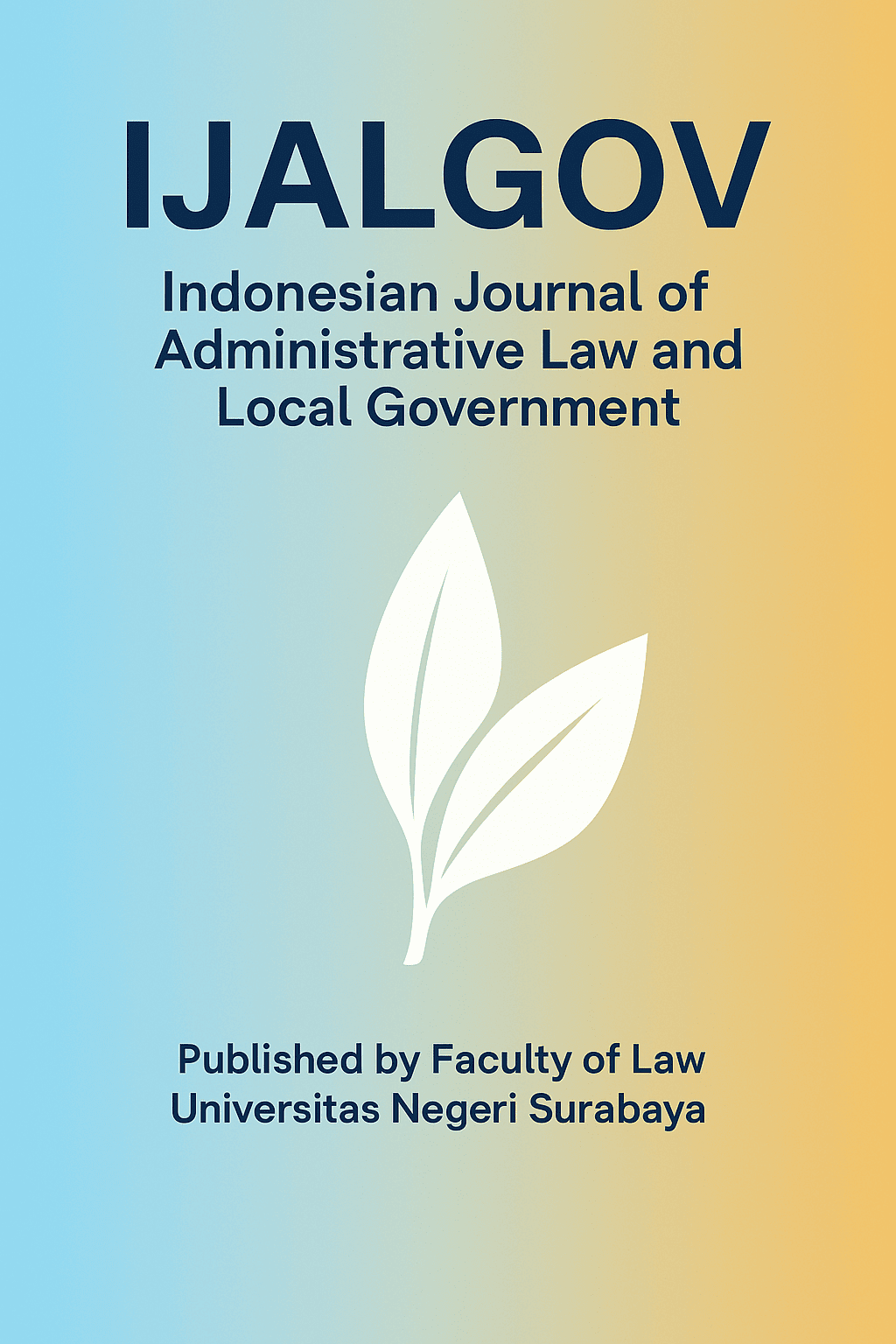A Comparative Analysis of Asset Forfeiture Regulations in Criminal Offenses: The Case of Indonesia, the United Kingdom, and New Zea-land
DOI:
https://doi.org/10.26740/ijalgov.v1i01.40721Keywords:
Corruption, Asset Forfeiture, Efforts to Recover State LossesAbstract
Corruption is a type of crime driven by economic motives because it has a negative impact on a country’s economic activities and financial stability. In Indonesia, corruption is an ongoing issue that must be eradicated. This is due to the fact that the financial losses suffered by the state as a result of corruption are enormous. However, the amount of recovered losses is not proportional to the losses themselves. Based on this, efforts are needed to recover state losses, one of which is through asset forfeiture. This study aims to analyze the existing regulation of asset forfeiture related to criminal offenses in Indonesia and to compare the legal frameworks for asset forfeiture between Indonesia, the United Kingdom, and New Zealand. This study uses normative legal research methods. The research approach applied includes statutory, conceptual, and comparative approaches. Data collection techniques were conducted through literature review, while the analysis technique used is prescriptive qualitative analysis. The results of the study show that the existing regulations on asset forfeiture in Indonesia are governed by various laws and regulations. The asset forfeiture mechanism adopted by Indonesia is in personam asset forfeiture. Meanwhile, the United Kingdom and New Zealand have added in rem asset forfeiture mechanism to their legal systems. In conclusion, Indonesia’s current regulation, which still relies on in personam asset forfeiture, is not yet sufficiently effective in recovering state losses caused by corruption
Published
 Abstract views: 454
Abstract views: 454






